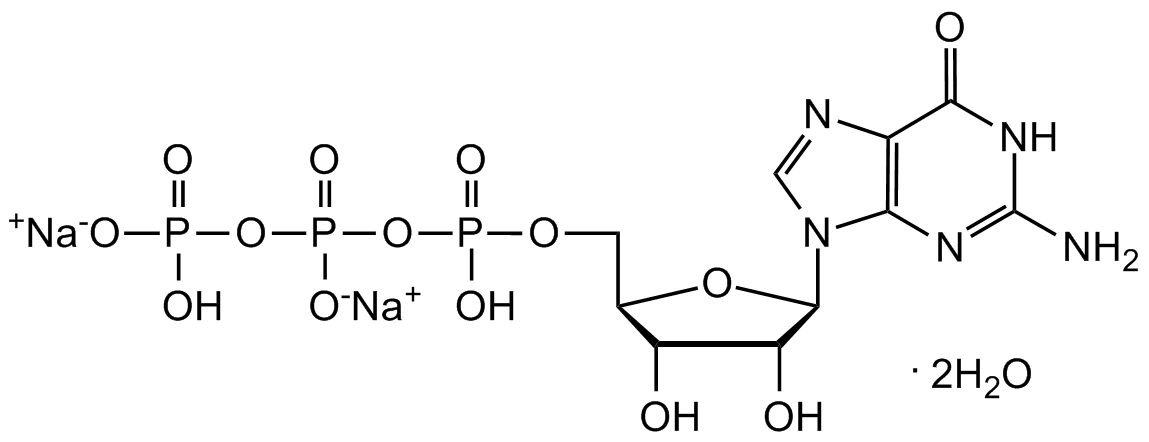
Chemical Structure
Guanosine
CDX-G0035
CAS Number118-00-3
Product group Chemicals
Estimated Purity>98%
Molecular Weight283.24
Overview
- SupplierChemodex
- Product NameGuanosine
- Delivery Days Customer10
- CAS Number118-00-3
- CertificationResearch Use Only
- Estimated Purity>98%
- Hazard InformationDanger,Excepted quantity
- Molecular FormulaC10H13N5O5
- Molecular Weight283.24
- Scientific DescriptionChemical. CAS: 118-00-3. Formula: C10H13N5O5. MW: 283.24. Synthetic. Purine nucleoside comprising guanine attached to a ribose (ribofuranose) ring via a beta-N9-glycosidic bond. Can be phosphorylated to become guanosine monophosphate (GMP), cyclic guanosine monophosphate (cGMP), guanosine diphosphate (GDP) and guanosine triphosphate (GTP). These forms play important roles in various biochemical processes such as synthesis of nucleic acids and proteins, photosynthesis, muscle contraction and intracellular signal transduction (cGMP). Guanosine has important functions in cell metabolism and a protective role in response to degenerative diseases or injury with neurotrophic and neuroprotective effects. Required for an RNA splicing reaction in mRNA, when a self-splicing intron removes itself from the mRNA message by cutting at both ends, re-ligating, and leaving just the exons on either side to be translated into protein. - Purine nucleoside comprising guanine attached to a ribose (ribofuranose) ring via a beta-N9-glycosidic bond. Can be phosphorylated to become guanosine monophosphate (GMP), cyclic guanosine monophosphate (cGMP), guanosine diphosphate (GDP) and guanosine triphosphate (GTP). These forms play important roles in various biochemical processes such as synthesis of nucleic acids and proteins, photosynthesis, muscle contraction and intracellular signal transduction (cGMP). Guanosine has important functions in cell metabolism and a protective role in response to degenerative diseases or injury with neurotrophic and neuroprotective effects. Required for an RNA splicing reaction in mRNA, when a self-splicing intron removes itself from the mRNA message by cutting at both ends, re-ligating, and leaving just the exons on either side to be translated into protein.
- SMILESO[C@H]1[C@@H](O)[C@H](N2C(N=C(N)NC3=O)=C3N=C2)O[C@@H]1CO
- Storage Instruction2°C to 8°C
- UN NumberUN 2811
- UNSPSC12352200



![Guanosine [118-00-3]](https://www.targetmol.com/group3/M00/03/06/CgoaEGY7RKCEWwYoAAAAAB3ExqA946.png)